|
|
 |
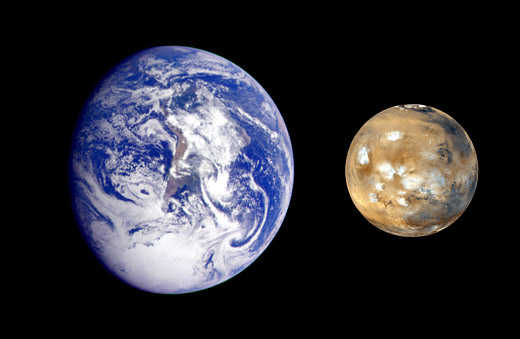 |
|
|
| Mars is similar to Earth in many ways, having many of the same "systems" that characterize our world. Although it lacks an ozone layer, Mars has an atmosphere, a hydrosphere, a cryosphere and a lithosphere (air, water, ice and rock). These systems all interact to produce the Martian environment. This Earth image was acquired by the Galileo orbiter in 1990; the Mars image was acquired by Mars Global Surveyor in 1999.
|
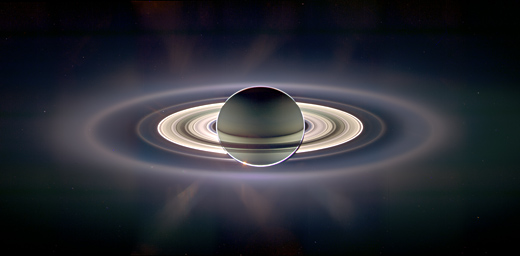 |
|
|
| With giant Saturn hanging in the blackness and sheltering Cassini from the sun's blinding glare, the spacecraft viewed the rings as never before, revealing previously unknown faint rings and even glimpsing its home world. |
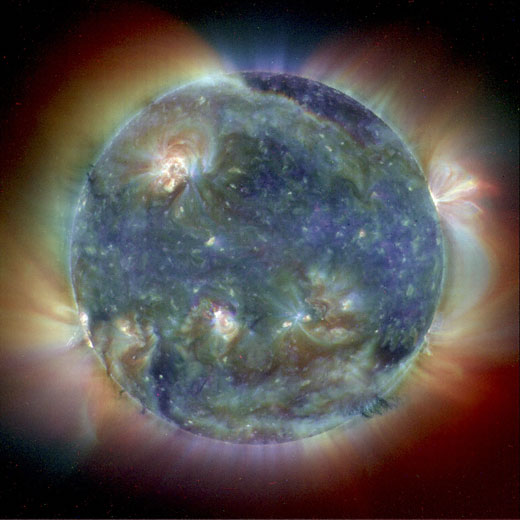 |
|
|
| This composite image combines Extreme Ultravoilet Imaging Telescope (EIT)images from three wavelengths(171, 195 and 284 angstrom) into one that reveals solar features unique to each wavelength. Since the EIT images come to us from the spacecraft in black and white, they are color coded for easy identification. For this image, the nearly simultaneous images from May 1998 were each given a color code (red, yellow and blue) and merged into one.
|
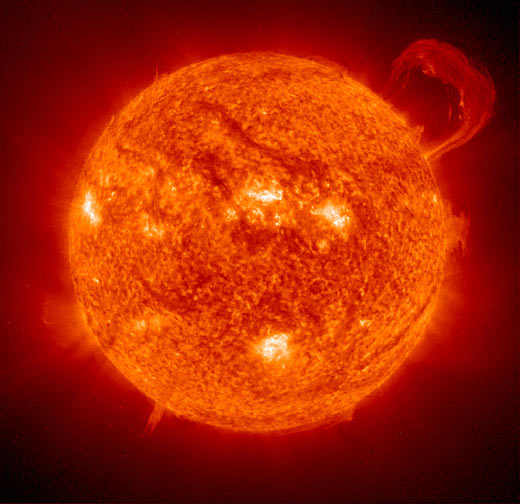 |
|
|
| Extreme Ultraviolet Imaging Telescope (EIT) image of a huge, handle-shaped prominence taken on Sept. 14,1999 taken in the 304 angstrom wavelength - Prominences are huge clouds of relatively cool dense plasma suspended in the Sun's hot, thin corona. At times, they can erupt, escaping the Sun's atmosphere. Emission in this spectral line shows the upper chromosphere at a temperature of about 60,000 degrees K. Every feature in the image traces magnetic field structure. The hottest areas appear almost white, while the darker red areas indicate cooler temperatures.
|
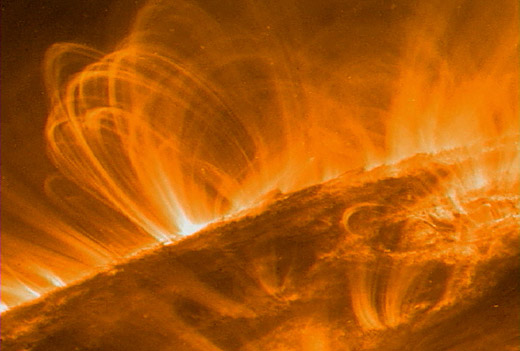 |
|
|
| Scientists discovered an important clue for solving the long-standing mystery of the hot solar atmosphere while observing coronal loops in unprecedented detail. New observations reveal the location of the unidentified energy source, showing that most of the heating occurs low in the corona, within about 10,000 miles from the Sun's visible surface. Millions of different-sized arches, called coronal loops, comprise the corona. These observations show that most of the heating must occur at the bases of the coronal loops, near where they emerge from and return to the solar surface.
|
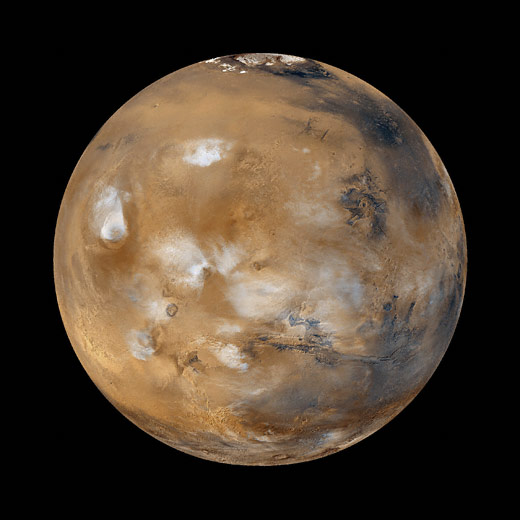 |
|
|
| Twelve orbits a day provide the Mars Global Surveyor MOC wide angle cameras a global "snapshot" of weather patterns across the planet Mars. Here, bluish-white water ice clouds hang above the Tharsis volcanoes.
|
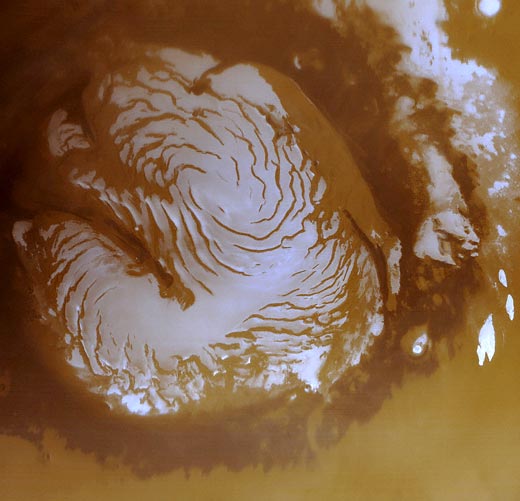 |
|
|
| Photographed in early northern summer, this picture was acquired in March 1999 near the start of the mapping phase of the Mars Global Surveyor mission. The light-toned surfaces are residual water ice that remains through the summer season. The band of dark material surrounding the cap consists mainly of sand dunes formed and shaped by wind. The north polar cap is roughly 680 miles (1100 km) across.
|
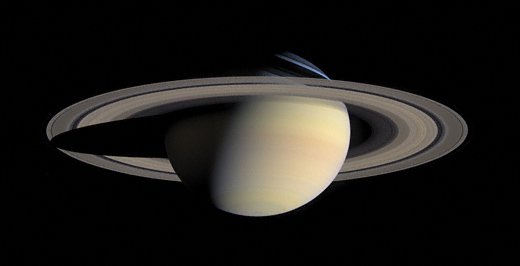 |
|
|
| This true-color simulated view of Jupiter is composed of 4 images taken by NASA's Cassini spacecraft on December 7, 2000. To illustrate what Jupiter would have looked like if the cameras had a field-of-view large enough to capture the entire planet, the cylindrical map was projected onto a globe. The resolution is about 144 kilometers (89 miles) per pixel. Jupiter's moon Europa is casting the shadow on the planet. |
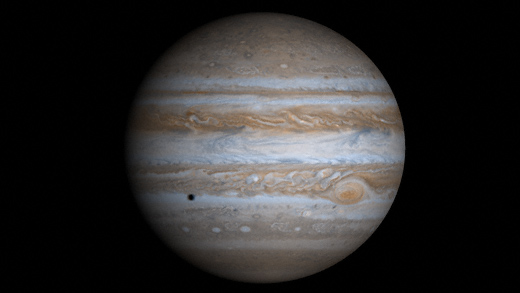 |
|
|
| This true-color simulated view of Jupiter is composed of 4 images taken by NASA's Cassini spacecraft on December 7, 2000. To illustrate what Jupiter would have looked like if the cameras had a field-of-view large enough to capture the entire planet, the cylindrical map was projected onto a globe. The resolution is about 144 kilometers (89 miles) per pixel. Jupiter's moon Europa is casting the shadow on the planet.
|
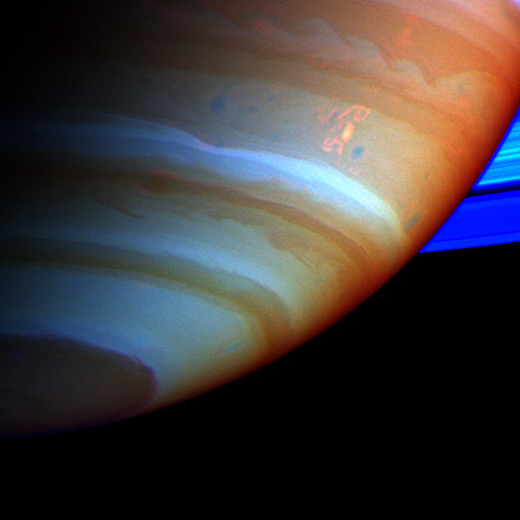 |
|
|
| Saturn's atmosphere and its rings are shown here in a false color composite made from Cassini images taken in near infrared light through filters that sense different amounts of methane gas. The complex feature with arms and secondary extensions just above and to the right of center is called the Dragon Storm. Portions of the atmosphere with a large abundance of methane above the clouds are red, indicating clouds that are deep in the atmosphere. Grey indicates high clouds, and brown indicates clouds at intermediate altitudes. The Dragon Storm was a powerful source of radio emissions during July and September of 2004. |
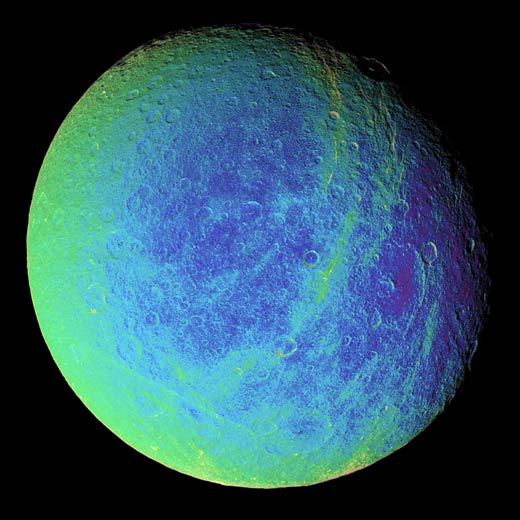 |
|
|
| Blue, green and red spectral filters were used to create this enhanced color view of Saturn's moon Rheawhich is heavily cratered with bright whispy markings. Its surface can be divided into two geologically different areas based on crater density. The first area contains craters which are larger than 40 kilometers (25 miles) in diameter. The second area, in parts of the polar and equatorial regions, has craters under 40 kilometers (25 miles) in diameter. This suggests that a major resurfacing event occurred some time during its formation
|
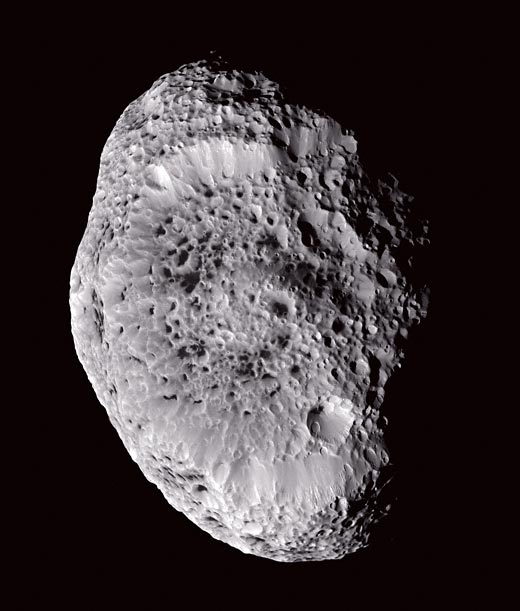 |
|
|
| This up-close view of Saturn's impact-pummeled moon Hyperion shows a low-density body blasted by impacts over eons. This six-image mosaic stares back at the Cassini spacecraft during the spacecraft's close approach on Sept. 26, 2005.. Scientists believe that the spongy appearance of Hyperion may be caused by a phenomenon called thermal erosion, in which dark materials accumulating on crater floors are warmed by sunlight and melt deeper into the surface, allowing surrounding ice to vaporize away. Hyperion's impact-shaped morphology at 280 kilometers, (174 miles) across, makes it the largest known irregularly-shaped moon in the solar system.
|
|
|
|